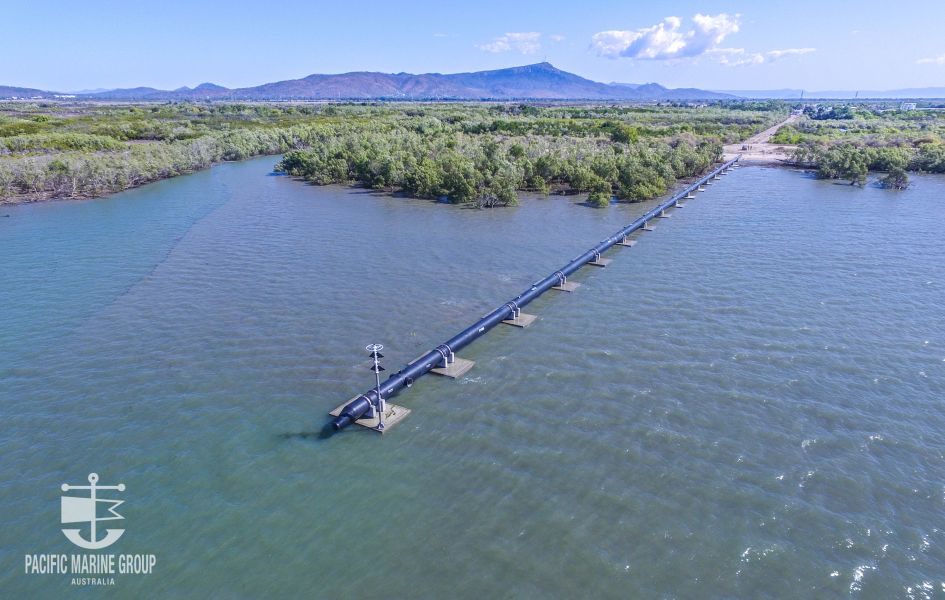Works are now completed on the Cleveland Bay Purification Plant (CBPP) Marine Outfall Pipeline Project.
The $51M upgrade to the facility still has some way to go before it will be ready to handle the wet season flow rates. However the efforts of the PMG project team have ensured that critical environmental permit conditions have been met, and the outfall pipeline is ready for the upgraded plant to be switched on.
PMG's part of the project was to remove the old ocean outfall, and install a new ocean outfall which involved driving and trimming 72 x concrete piles, installing 18 concrete headstocks, and fitting 230m of 1.2m rubber ring jointed cement lined steel pile, with a diffuser structure at the seaward end. This was a challenging job due to the shallow water and strict environmental operating conditions.
The Cleveland Bay area is designated a conservation park zone within the Great Barrier Reef Marine Park and is home to significant marine species including dugong, marine turtles, dolphins and humpback whales.
Through our contribution in the early tender involvement phase, the project designers and construction team were able to minimise the environmental impacts due to the outfall pipeline construction and plant bypass. That early involvement has paved the way for a successful construction phase consistent with the clients project goals:

Pacific Marine Group were able to draw upon our expertise working in near-shore, sensitive environments similar to Cleveland Bay to successfully manage the works adjacent to mangrove wetlands.
We used a custom built remote piling frame that allowed four piles to be driven with each frame movement and twenty-four piles with each barge movement. This innovation allowed works to progress without regular barge movements, which minimized seabed disturbance and was a significant production benefit in the shallow tidal waters.
The piling frame was mounted to existing redundant infrastructure. This ensured the piling supports were always clear of the seabed and therefore also minimizing seabed disturbance.
11-15 Sandspit Drive
South Townsville 4810,
Queensland, Australia
P. +61 7 4724 2200
F. +61 7 4724 2208






